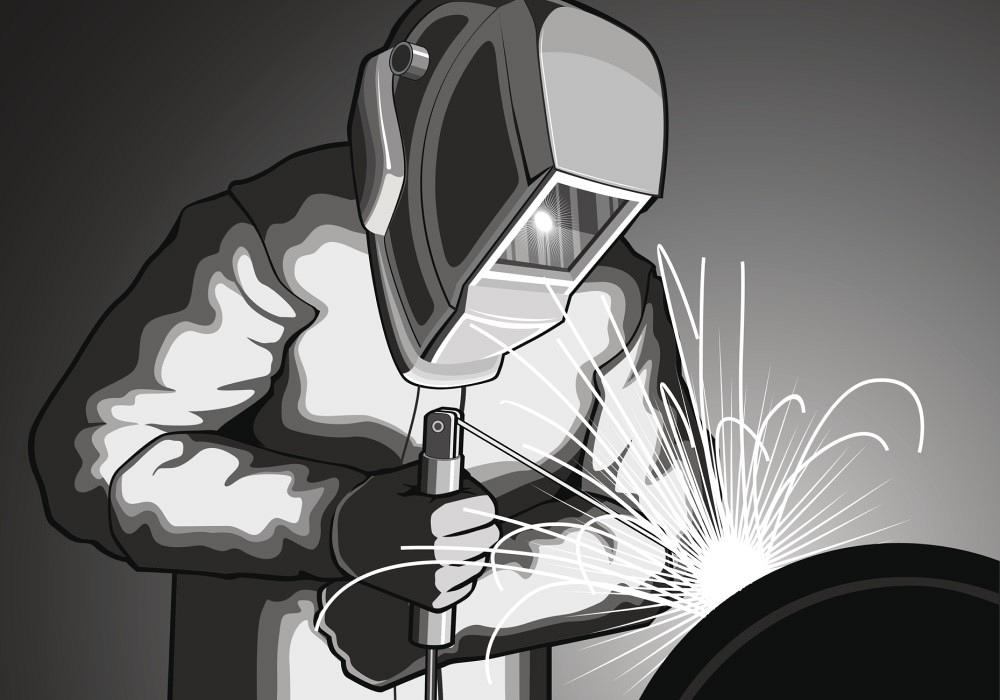Welding WPS: Common Mistakes to Avoid and How to Correct Them
Welding WPS: Common Mistakes to Avoid and How to Correct Them
Blog Article
The Ultimate Guide to Welding WPS Procedures: A Detailed Overview for Welders
In the elaborate globe of welding, Welding Treatment Requirements (WPS) act as the foundation of making sure top quality, uniformity, and safety and security in welding operations. Understanding the nuances of creating, executing, and keeping track of WPS procedures is vital for welders aiming to boost their craft and fulfill sector requirements. As we dive into the numerous elements of a WPS and discover the details of certification and certification, we will discover the crucial function these procedures play in the realm of welding. Let's begin on a journey to untangle the complexities and significance of WPS procedures in welding techniques.
Value of WPS Procedures
Understanding the significance of Welding Treatment Specs (WPS) procedures is important for making sure the high quality and integrity of bonded structures. WPS procedures act as a roadmap for welders, describing the necessary actions, criteria, and products required to achieve an audio weld. By sticking to WPS guidelines, welders can make certain uniformity in their work, resulting in structurally sound and reliable welds.
One of the primary factors why WPS procedures are vital is their function in maintaining weld top quality and stability. Complying with the specified welding specifications and strategies outlined in the WPS helps stop flaws such as porosity, breaking, or incomplete blend, which can endanger the strength and longevity of the weld.

Elements of a WPS
A Welding Treatment Requirements (WPS) commonly makes up essential components that detail the details needs for performing a weld, making sure consistency and high quality in the welding process. The key parts of a WPS include necessary variables such as base metals, filler metals, interpass and preheat temperatures, welding processes, protecting gases, welding placements, and post-weld warm therapy requirements.
Base steels refer to the materials being joined, while filler metals are used to fill the space between the base steels throughout welding. The welding procedure describes the certain strategy to be made use of, whether it's gas steel arc welding (GMAW), shielded steel arc welding (SMAW), or another method. Welding positions define the alignments in which welding can be executed.

Credentials and Certification
Having established the vital components of a Welding Procedure Spec (WPS), the focus now shifts towards the important aspects of qualification and qualification in welding techniques.

Certification, on the other hand, click this link is the formal recognition of a welder's credentials by a pertinent certification body or organization. Welding certifications are typically based on the particular welding processes, products, and settings a welder is certified to collaborate with. Holding a valid welding accreditation shows that a welder fulfills industry requirements and is qualified see post to carry out welding tasks to the required requirements.
Producing a WPS
To establish a Welding Procedure Requirements (WPS) that satisfies sector requirements, careful factor to consider of welding processes, products, and functional criteria is vital. The very first step in creating a WPS is to recognize the welding procedure to be utilized, such as gas steel arc welding (GMAW) or shielded steel arc welding (SMAW)

Executing and Checking WPS
Upon settling the extensive Welding Treatment Requirements (WPS) that thoroughly information welding procedures, materials, functional parameters, and quality control steps, the focus moves to effectively carrying out and checking the established procedures. Execution includes making certain that all welders associated with the project recognize with the WPS and follow it thoroughly throughout the welding procedure. This needs offering adequate training and supervision to assure adherence to the defined treatments. Checking the WPS includes continuous oversight to confirm that welding tasks align with the documented requirements. Evaluations, testing, and quality assurance steps are necessary parts of the tracking procedure to identify any problems or deviations immediately. Normal audits and evaluations of the welding procedures aid in keeping consistency and high quality throughout the project. Reliable execution and tracking of the WPS are essential for making certain the stability, toughness, and safety and security of the welded joints, ultimately adding to the total success of the welding job.
Verdict
Finally, understanding and complying with Welding Procedure Specs (WPS) is crucial for welders to make sure high quality, consistency, and safety in their work. By recognizing the parts of a WPS, obtaining correct qualifications and accreditations, developing in-depth treatments, and implementing and monitoring them properly, welders can enhance their abilities and proficiency in welding practices. Adhering to WPS treatments is crucial for producing premium welds and meeting market requirements.
In the detailed globe of welding, Welding Procedure Requirements (WPS) offer as the backbone of making certain quality, uniformity, and safety and security in welding procedures. The welding procedure lays out the specific strategy to be used, whether it's straight from the source gas metal arc welding (GMAW), protected metal arc welding (SMAW), or another method.To develop a Welding Procedure Requirements (WPS) that fulfills sector criteria, cautious consideration of welding processes, products, and functional specifications is vital. The first step in developing a WPS is to determine the welding process to be used, such as gas steel arc welding (GMAW) or secured metal arc welding (SMAW)Upon completing the extensive Welding Treatment Spec (WPS) that diligently information welding processes, products, functional criteria, and high quality guarantee procedures, the focus changes to effectively implementing and checking the recognized procedures.
Report this page